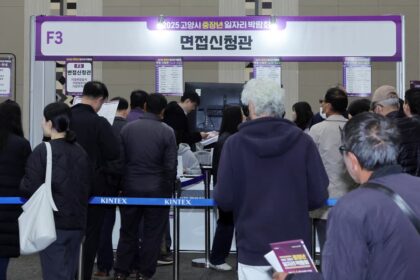A cautious generation and the new thrift culture
China’s leaders want households to spend more. However, a growing share of young adults are doing the opposite. Youth joblessness, wage cuts, and a deep property slump are pushing recent graduates to save every yuan. Household consumption accounts for roughly 39 percent of GDP, far below the approximate 60 percent common in mature economies. This gap matters because services and retail are important engines of job creation. When young consumers pull back, growth cools and businesses hold off on hiring.
- A cautious generation and the new thrift culture
- What is holding back youth spending
- Social media turns frugality into a movement
- Deflation, property stress, and the macro picture
- Generational split and shifting values
- Where young people still spend
- How brands and policymakers are responding
- Outlook for 2025: cautious, value first consumption
- Key Points
That retreat shows up in daily life and on phone screens. Money saving advice floods social platforms. On Xiaohongshu alone, content tagged for frugal living has drawn well over a million posts and hundreds of millions of views. Influencers spotlight minimalist routines, no brand toiletries, and strict budgets. One creator in Beijing, who goes by Little Grass Floating in Beijing, shows how to eat two meals for a little over one dollar and says a modest lifestyle helped save more than 180,000 dollars in six years. Another, Zhang Small Grain of Rice, promotes simple purchases and warns viewers about consumption traps that push shoppers to pay for things they do not need.
What is holding back youth spending
The class of 2024 and 2025 enters a job market where the unemployment rate for ages 16 to 24 has hovered around the high teens. A record number of graduates meets a slower economy. Many open positions require advanced skills in automation, software, or hard sciences, while a large share of graduates studied fields with less direct demand. Companies that digitized during the pandemic kept lean staffing. The result is more competition for fewer entry level roles, along with a rise in gig work and part time hustles.
A slack market gives employers leverage to cut salaries or trim bonuses. Young applicants accept lower pay or unrelated work, from delivery driving to online sales, to cover basics. That instability discourages discretionary spending. Big life steps also drift into the distance. Home ownership looks out of reach in many large cities because down payments are steep and credit standards are tighter. The property slump, with stalled projects and falling prices, has weakened the wealth effect that once encouraged households to spend. Parents who once covered part of a mortgage for their kids also feel less confident when the value of their own apartment has slipped.
Price dynamics add another headwind. When prices are flat or slipping, shoppers expect better deals later. Economists call that deflation, a period when goods or services get cheaper over time. If consumers delay purchases, sellers cut prices or production, which can reduce hiring and investment. Even mild price declines can encourage waiting, which is exactly what many cautious young shoppers are doing. They hunt for discounts, time purchases around sales, and hold off on new phones or appliances unless a clear need arises.
Social media turns frugality into a movement
Frugality is not new in China, but a new generation has turned it into a shared project. Viral hashtags celebrate revenge saving, a tongue in cheek response to years of pressure to spend and stand out. The mission is simple, keep daily outlays as low as possible and post the receipts. The earlier moonlight culture, a term for living paycheck to paycheck, has faded. Data from big digital wallets shows a jump in deposits by Gen Z, and second hand platforms are booming. Xianyu, the largest resale site, counted hundreds of millions of users in 2024 and transactions many times higher than in 2018.
Influencers of thrift
Creators who preach simplicity are now household names to young viewers. They endorse budget versions of everyday goods and teach tactics like cooking in batches, using price trackers, and maintaining wish lists instead of impulse purchases. Zhang Small Grain of Rice, a full time minimalist lifestyle creator, frames every decision around value and mental calm. Her audience comes for practical tips, from pared down skincare kits to no waste pantry staples, with the goal of saving more and stressing less.
Reverse consumption and lazy health
Reverse consumption, a label that gained traction on Weibo ahead of recent shopping festivals, means buying fewer things, buying only what you truly like, or swapping brand names for dependable basics. The health equivalent is lazy health, small and easy routines that fit tight budgets and schedules. Young office workers do light qigong in parks, choose inexpensive massage chairs over spa packages, and share low cost mental wellness practices. The common thread is control. Consumers want products and services that feel truly useful, fairly priced, and aligned with personal goals, not status.
Deflation, property stress, and the macro picture
China still reports GDP growth near 5 percent, yet the composition of that growth has shifted. Investment and exports carry more weight, while household spending grows at a slower pace. Retail sales are recovering from pandemic lows, but momentum is softer than during the last decade. Many families prefer to strengthen savings buffers, a rational response after volatile years. That tendency is strongest among youth, who face the longest timelines and the greatest uncertainty.
Policy makers have tried to steady sentiment. Local programs offer rebates to upgrade appliances or trade in old cars. The central bank has loosened credit conditions and encouraged banks to support consumer loans. Many respondents in recent surveys say they feel a bit more confident about the broad outlook, though expectations for personal income growth have slipped to low single digits for 2025. Rural households reported quicker income gains in 2024, helped by targeted programs. In cities, older and affluent consumers cooled on spending as asset values fell, while low income millennials in top tier cities remained the most anxious about jobs and housing costs.
Generational split and shifting values
Rapid change across age groups is reshaping what it means to live well. Retirees with stable pensions kept many of their routines, from dining out to domestic travel, although they are more price aware than before. Many twenty and thirty somethings recalibrated their ambitions. The rise of tang ping, or lying flat, captured that sentiment, a refusal to chase overwork without clear rewards. A newer phrase on Chinese social media, garbage time, speaks to the feeling that expectations are lower, so people focus on small wins and personal wellbeing.
Gao Shanwen, chief economist at SDIC Securities, described the consumption gap that has opened across age groups.
“The elderly are vibrant, the youth are lifeless, and the middle aged are despairing.”
He argued that provinces with younger populations have seen slower consumption growth because job prospects for new graduates are weaker. The youth unemployment rate sat around 17 percent in late 2024 and early 2025, far above the national headline rate. Millions of young people cycle between internships, gig work, and short stints, a pattern that often falls outside official tallies. The effect on spending is clear, fewer weddings, fewer new homes, and lower appetite for big commitments.
Where young people still spend
Caution does not mean a freeze on all purchases. Spending has shifted toward small treats, local travel, sportswear, outdoor gear, and health products. Those categories deliver day to day utility and joy at a manageable cost. Experiences also matter more. Young consumers pay for gym classes, short trips, and courses that support a hobby. Many are willing to use savings for purchases that upgrade quality of life, while holding back on status items or second cars.
Emotional value has become a clear driver. The growing guzi economy, centered on anime and game related merchandise, shows how culture and community shape purchases. Market estimates place the sector near 170 billion yuan in 2024, with projections above 300 billion yuan by the decades end. Shoppers are not simply buying a product, they are buying belonging. Conventions, pop up stores, and theme cafes double as social spaces. Chen Kela, a post 90s tech worker, explained why plush toys became her go to comfort item before and after her first job abroad.
“These Jellycat plush toys with their smiling faces make me feel incredibly warm. I just cannot help but want to collect another one.”
She added that the appeal goes beyond decoration.
“They do not give negative feedback or judgments. You can safely confide in them.”
Sun Jin, a professor at the Business School at the University of International Business and Economics, sees a deeper pattern in these choices.
“Young people construct self identity through consumption while seeking emotional value, making self indulgent consumption a hot trend.”
How brands and policymakers are responding
Officials want consumption to play a larger role in growth. Cities rolled out digital coupons and discount weeks. Trade in programs encourage households to replace old appliances and cars. Universities expanded campus recruiting and placement services for graduates. These steps help at the margins. Sustainable change depends on better job quality, stronger worker protections, and a property market that no longer drains confidence. When incomes feel secure, people are more willing to spend and to plan for family life.
Consumer companies are adapting in real time. Many are designing value for money product lines and promoting refurbished or certified second hand channels. Retailers push group buys and membership deals. Warranties and free repairs lower the risk of purchase. For categories that hinge on emotion, exclusivity, and community, brands court fans with limited drops, collaboration merchandise, and interactive venues. Anime themed zones, specialty cafes, and craft workshops are drawing foot traffic because they merge shopping with socializing. The most successful players keep prices fair and experiences fresh.
Outlook for 2025: cautious, value first consumption
Consumer confidence looks steadier than a year ago, yet intent to spend remains cautious. Surveyed households expect modest growth in consumption near the low single digits this year. Categories linked to personal fulfillment, such as travel, dining out, outdoor activities, and consumer health, have the best prospects. Big purchases will depend on progress in hiring and a clearer floor for housing. Until those two anchors improve, many young Chinese will keep saving more, buying better, and resisting pressure to splurge.
Key Points
- Youth unemployment has stayed in the high teens, prompting graduates to save and delay big purchases.
- Household consumption is about 39 percent of GDP in China, far below the level in advanced economies.
- Frugal living content on Chinese social media has exploded, and second hand platforms have reached hundreds of millions of users.
- Deflation risk encourages shoppers to wait for lower prices, which weakens sales and hiring.
- Economist Gao Shanwen says older consumers are steady while the young are pulling back, widening the generational spending gap.
- Spending has shifted toward small treats, local travel, sportswear, and health products that deliver daily value.
- Emotional value drives purchases in areas like the guzi collectibles market and themed retail experiences.
- Policy measures and retail promotions help, yet lasting change hinges on better job quality and a more stable housing market.
- Brands that win offer fair prices, strong service, and community rich experiences, not just discounts.
- Outlook for 2025 points to cautious growth in consumption, with value first choices dominating youth behavior.












